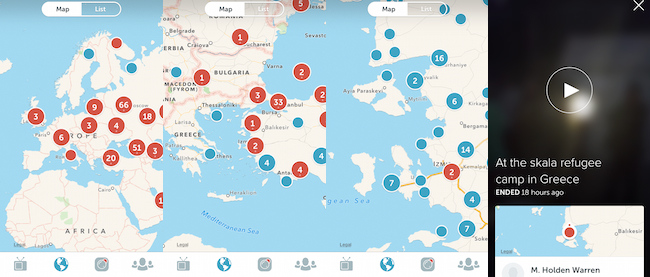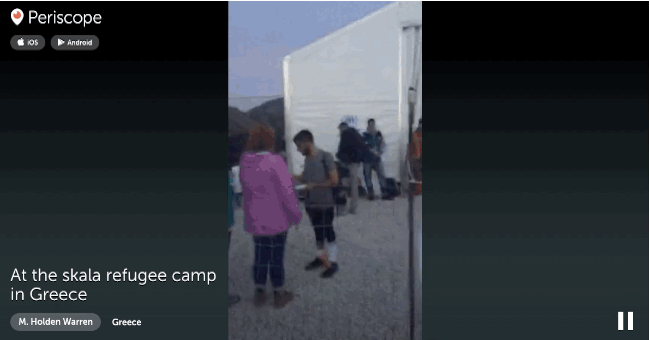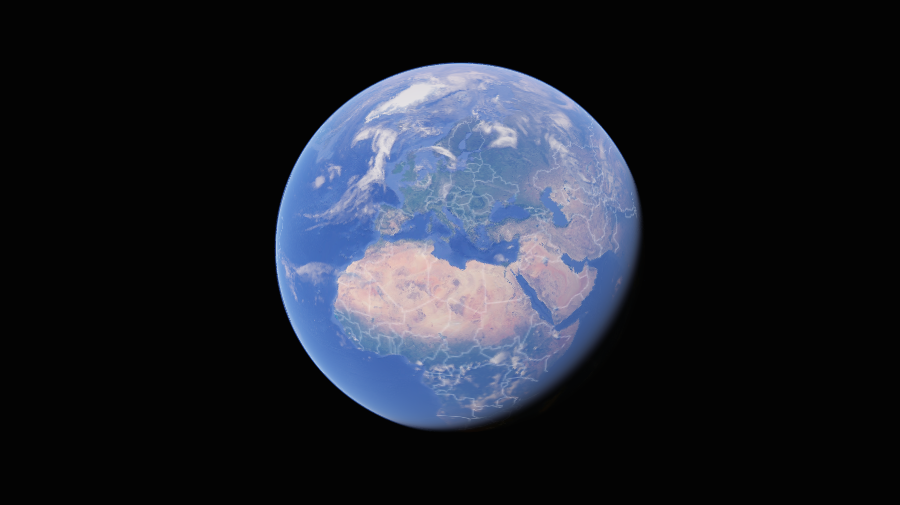Periscope, Twitter’s livestreaming app, received an update yesterday which could make it a vital newsroom tool.
Users of the iOS app can now search for live streams and saved broadcasts by location, and users can skip through broadcasts to find the most interesting moments.
On the map, live streams are shown in red while saved broadcasts display in blue, a considerable step up from the map’s previous incarnation which would only show 250 live broadcasts at one time.
“We’ve always thought that Periscope has the potential of showing you the world in real time,” wrote the team behind Periscope in a Medium post accompanying the updates. “This vision inspired us to create the Global Map.”

Zooming in on the Aegean Sea on Periscope, it is easy to quickly find broadcasts from areas affectedby the refugee crisis
“When we’ve heard about breaking news events, as in the case of Hurricane Patricia, we’ve found ourselves checking Periscope first.
“We think that the new Map functionality is much closer to fulfilling our original vision of seeing the world in real time.”

Part of M. Holden Warren’s broadcast from the Skala refugee camp on the Greek island of Cephalonia
The potential use cases for news organisations are huge. As shown above, a quick search around the map quickly reveals saved broadcasts from refugee camps in Greece which can be viewed on mobile. Although the map function is currently only available on iOS, users can copy the link in the app to thenview full size in a web browser.
If deemed newsworthy, news organisations could then reach out to uploaders for the original video, in keeping with established best practice for approaching eyewitnesses and using eyewitness media.
The use of live broadcasts from Periscope users by news organisations brings up its own set of ethical issues, however. Derek van Pelt, an eyewitness to the Bangkok bombing in August, became an unwitting reporter when he decided to broadcast the aftermath from the scene from Periscope. He quickly discovered the horror such a decision can involve.
“Watching Derek Van Pelt’s coverage from Bangkok cemented the view that live streaming apps can very easily expose unsuspecting viewers to graphic or traumatic images they may not otherwise wish to see,” wrote EMHub’s Pete Brown at the time.
“By anyone’s standards, the scene left in the immediate aftermath of the Erawan shrine bomb was horrific. Emergency services were diligently attempting to cover body parts with paper towels, but as Mr Van Pelt said during his third broadcast, ‘There is human flesh just everywhere’.”
The new map feature will doubtless bring new challenges and decisions for newsrooms, particularly around eyewitness safety during live broadcasts, but the opportunities for eyewitness video have expanded considerably.



